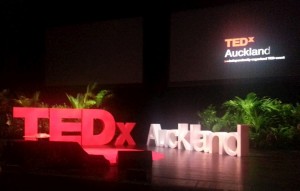
It was a long time coming, but boy was it worth the wait!
The last TEDx Auckland was in 2010, and we skipped 2011 as a change of the management for the local event was underway. Now TEDx Auckland has it’s own not-for-profit organisation to run it for this year and into the future.
This years team led by Elliott Blade did an amazing job and this event fully eclipsed the previous ones in terms of turn-out and venue.
But of course the big question was could it stand up to the previous high standard of speakers? I mean having a huge sold-out venue is one thing, but it isn’t the reason we come to a TEDx event…
Happily the answer is YES. The speakers were all great, each in their unique way, and I will give my impression of the speakers and the key message that I took from each of them in this post. -By the way it is worth mentioning that I personally avoided finding out who the speakers were or their topics prior to attending. I didn’t want any preconceived ideas.
Session 1
Because of the sold out crowd the start was delayed as the numbers were processed. This was the only obvious glitch in the day but was accepted without too much fuss. It was frustrating for those in the huge queues lining up to pick up their tickets. I would suggest that The Edge who handled the ticketing should have done better. I assume this is not the first time they have sold out the Aotea Centre.
As with the previous TEDx Auckland Andrew Patterson was acting as MC and he kept things moving quickly along and deftly handled introductions, and provided a few laughs. I particularly liked the way that he shared his favourite current #TEDxAkl tweet each time he came on stage. Andrew set the scene of this year’s event as Thought Leadership. He also mentioned the Vodafone World of Difference program where Vodafone chooses up to four people who have a something that they want to do to change the world (particularly focused on young people) and fund them for a year to pursue that goal.
My Quest to Become a Super Hero
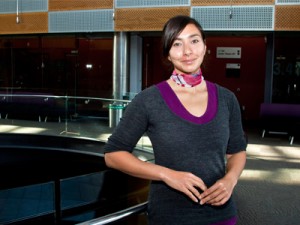
The first speaker was Michelle Dickinson. In her delightful speaking style she told of her penchant for breaking things and her unrealistic hopes of one day becoming a super hero. This led her to Fracture mechanics in University where she could indulge in breaking things and best of all not be expected to put them together. Her love of Michael Crichton’s book Prey, and a chance comment from a professor got her involved in nano sciences. Effectively breaking really small things.
This has led to her once more pursue her dreams of becoming a super hero, with the specific powers of flight, telepathy, and invisibility.
For telepathy Michelle talked about a computer chip covered in brain cells in an attempt to see how the brain cells interact and how connections are formed and maintained between them. Other than the questionable potential to read minds the very real and benefit of this research is the hope of helping with physical-mental issues such as alzheimer’s and parkinson’s disease.
Flight and Invisibility were accompanied by two of the coolest demonstrations I have ever witnessed. For flight Michelle demonstrated levitating a small magnet over a super conductor (using liquid nitrogen to create the super conductor). That was cool, but the best visual effect was the ‘invisible shield’ on her shoes. This was a nano-particle spray that stopped liquids from sticking. Michelle squirted chocolate sauce over her chucks, and then tipped them up and the sauce all fell straight off.
Of course these things were explained in a comprehensive and comprehensible manner in her talk. But I know people were talking about the demos many hours later.
Rebuilding Architecture from the Ground Up
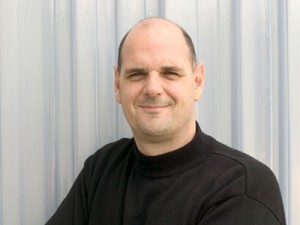 Andrew Patterson is an architect (with the same name as the MC), and I have to admit to being a little apprehensive about listening to a subject which has zero appeal or interest to me.
Andrew Patterson is an architect (with the same name as the MC), and I have to admit to being a little apprehensive about listening to a subject which has zero appeal or interest to me.
But I was taken in by the concept of how Maori inspired design would be (and is) very different from western styled design, and why that is the case. Andrew introduced us to the ‘tripod’ concept of architecture dreamt up in the west in the 18th century, made of three pillars: Concept; Attitude; Communicate.
He then showed how he and others have created designs based on a Maori version of the tripod with the three pillars: Rangi & Papa Attitude; Form Follows Whanau; and Thinking in Patterns. The structures created using these philosophies were strikingly different and inspiring.
Higgs Boson -The Kiwi Connection
Dr. David Krofcheck is a senior lecturer at the University of Auckland. And being a bit 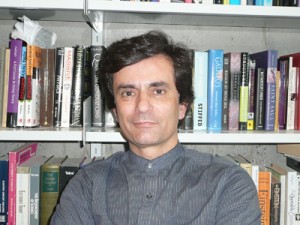 of nerd I was sure this was a presentation I would appreciate. -I was not let down. David broke down the questions that led to the Peter Higgs postulation of the Higgs Field and the corresponding Higgs Boson particle that must exist in the Quantum framework. Basically Physicists could account for 99% of the mass in the universe but that pesky 1% was really annoying.
of nerd I was sure this was a presentation I would appreciate. -I was not let down. David broke down the questions that led to the Peter Higgs postulation of the Higgs Field and the corresponding Higgs Boson particle that must exist in the Quantum framework. Basically Physicists could account for 99% of the mass in the universe but that pesky 1% was really annoying.
Higgs suggested that there was a field that came into creation just after the big bang and has continued without decay. But there was a lot of people who were understandably a bit skeptical of an invisible all encompassing field that can’t be detected. And it was this that the Large Hadron Collider (LHC) was created to detect.
I was enchanted by the simple way David described how the LHC worked. He asked us to put hour hands up palms facing each other a couple of inches away from our face and a few inches apart, and then clap. The puff of air we felt on our face (our detector) was a result of the reaction of our two hands meeting.
In a similar way the LHC collides protons together and detects the resulting ‘debris’ and energies.
I had heard many times (on Discovery channel) how the LHC collided protons, and I was totally in awe of how they could accelerate two protons to just below the speed of light, in opposite directions and then get them to collide within the detector. I learned from David that the reality is a little more believable, although still incredible. A string of approximately 1 billion protons, about the width of a human hair and a few inches long is accelerated in opposite directions. Of these 2 billion protons screaming towards each others in a confined space, at just below the speed of light, the result is an average of just 30-40 collisions.
It was very interesting to hear what New Zealand’s contribution to this project is. On either end of the detector (known as the CMS), is a unit and associated software created in New Zealand which measures the energy signature of the proton string entering the detector before colliding. If the energy signature is outside of certain parameters it means that the proton string has become stretched out or ‘scattered’ and any data from a collision with such a proton string would yield bad data for the program. When this sort of anomaly is detected by the NZ detectors, a command is sent to the main data collection point of the CMS telling ti to ignore that data. Effectively New Zealand is responsible for the Quality Assurance of the Large Hadron Collider. -Pretty damned cool!
One of many things that amazed me about this project was the data set that they needed to get in order to determine definitively if the Higgs Boson particle was actually present. They need to analyse 700,000,000,000,000 collisions (seven hundred thousand billion). I did ask via tweet how long that would take, and what is the ‘rate of fire’ of the LHC. -Do they accelerate continuously? Does it just fire off a few times a day? – I will update this post when I get an answer.
ICARE -Changing Lives in Iraq
 Dr. Assil Russell’s story started before she had finished her medical studies when she was still a ‘poor student’ in Dunedin. It was inspiring to hear how someone who seemingly has no resources still has the ability to save the life of someone they don’t know but heard about on the other side of the world.
Dr. Assil Russell’s story started before she had finished her medical studies when she was still a ‘poor student’ in Dunedin. It was inspiring to hear how someone who seemingly has no resources still has the ability to save the life of someone they don’t know but heard about on the other side of the world.
Finding out about a child that needed some life saving surgery Assil started with a bake sale and wrote a cookbook on Middle Eastern cuisine. These efforts raised enough money to enable the child to undergo the life-saving operation.
Since that success Assil has founded ICARE (Iraqi Children’s Aid & Repair Endeavour) which helps co-ordinate medical professionals who wish to volunteer their services, as well as the fundraising for required supplies to help children suffering the effects of ongoing conflict in Iraq.
I have to say that the inspiring message for me from this presentation was: It doesn’t matter who you are or where you are, if you really want to help, really want to impact the life of others, you can.
Assil lives and works in Hamilton, and I chatted to her after the event inviting her to speak at one of our Social Media Club Hamilton events in 2013… Will keep you posted.
I was happy to have a break after four very strong presentations.
Session 2
Teaching Computers to Talk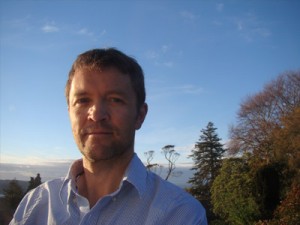
Alistair Knott led us through an interesting line of reasoning that showed how Linguistics overlap with Neuro Motor Systems. I know that doesn’t sound all that interesting, and if he had started off that way I think half of the audience might have mentally switched off. Fortunately he did a much better job of it than I can here. Starting with how a baby learns to talk, and their progress at 6 months; 1 year; 2 years, and then a huge explosion of ability as they hit 3 years of age.
Alistair briefly explained Chomsky’s controversial proposal that language is not learned, but rather is native to humans. Chomsky developed a ‘structure tree’ (I didn’t note down it’s actual name), which shows how words can be aligned and works for any language construction.
Then Alistair led us on a fascinating journey through the motor skills of grabbing a cup, as well as an observer observing someone grabbing a cup using a simple video clip. Finally the motor skills were tied back to Chomsky’s structure to show that these things have a definite correlation and overlap.
Wet Hot Beauties
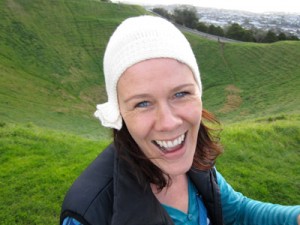 This presentation illustrates the reason that I avoid reading the speaker profiles or topics prior to attending the event. For me this presentation stands out as being the most surprisingly impactful. I mean that I would not have expected to get anything from this presentation, I could not have imagined that anything Pip would have to say on synchronised swimming for middle aged women would have any impact on me at all. I am happy to have been proved wrong.
This presentation illustrates the reason that I avoid reading the speaker profiles or topics prior to attending the event. For me this presentation stands out as being the most surprisingly impactful. I mean that I would not have expected to get anything from this presentation, I could not have imagined that anything Pip would have to say on synchronised swimming for middle aged women would have any impact on me at all. I am happy to have been proved wrong.
Basically Pip and some friends were thinking about what they could do to bring a little more interest into their life. They considered a book club (very briefly by the sounds of it!), cooking lessons, and the usual fare of urban dwellers. Out of this brainstorming came the idea of Synchronised Swimming. Something different, something that will require new learning.
On calling the local Synchronised Swimming club Pip was surprised and a little indignant when they said they teach children but not middle aged women. So Pip started up a club herself -with no experience. She soon got a group of interested people together. Their first attempts in the pool were near disastrous, until one of the group suggested that they use the kids pool instead of the deep adult’s pool.
Now the Wet Hot Beauties comprise a community of around 250 people. They have had funding from Arts New Zealand (I think), and have performed every night of the Auckland Fringe Festival. The performers in the troop include people from ages 14-68, a legally blind woman and “a few very brave men”.
What inspired me about this was the whole idea of doing something ridiculous and really going for it. I use the word ridiculous specifically with the meaning of being open to ridicule. It is amazing that a group can be formed from an idea that is so off the wall but it is also the sort of event or activity that builds a strong community with a very focused and shared identity. Individually I believe that being involved with this sort of community and activity is very empowering and cathartic.
Incidentally while I was really impressed and singing the praises of Pip and her presentation, I did speak to others at the after party that said this presentation did nothing for them. -I only mention this to highlight that any TEDx event will only give you what you bring in to it, and different people will get different things from each of the presentations. These same people also had a very different reaction to Sam Hunt than I did.
What’s Your Prison?
For me, and for many other attendees that I spoke to, Dr. Paul Wood’s presentation on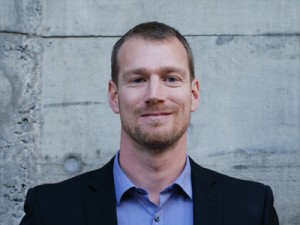 personal change was the most powerful presentation of the day. The subject of personal change; the prisons we create for ourselves; and the commitment to an ongoing pursuit of personal freedom is something that resonates with all of us.
personal change was the most powerful presentation of the day. The subject of personal change; the prisons we create for ourselves; and the commitment to an ongoing pursuit of personal freedom is something that resonates with all of us.
But what I think really made the message stand out was Paul’s personal story and his straight forward, and direct from the heart, manner of speaking.
I cannot possibly do his presentation justice here. And I won’t even attempt it. But I will give you the bare outline. I urge you to watch the video when it becomes available.
Paul was a troubled teenager who hung with the wrong crowd and dabbled in drugs. When his mother died he arranged a meet on the phone to buy some drugs in order to dull the reality he was feeling. What he didn’t know was that the person that he called to meet to get the drugs off had his own agenda. Specifically having sex with young troubled men. What neither of them knew was that the meeting would finish with the drug dealer/sex predator dead, and Paul sentenced to 10 years in prison.
Paul had no real education prior to entering prison, but made a decision to change and went through getting a degree and masters in prison becoming the first person in New Zealand to enter the prison system as a high school drop-out and leaving undergoing doctorate studies.
Paul now teaches change an d personal freedom for individuals and organisations using his 5 step process: 1) Recognise you are born free. 2) Choose to break out of your prison. 3) Make the escape. 4)Fight for freedom. 5)Living free -It’s a condition and an ongoing practice, not a destination.
Fighting Organ Failure
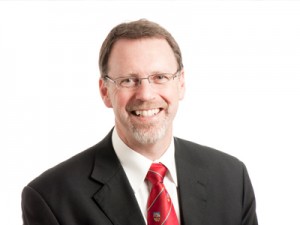 One of the things I love about TED & TEDx presentations are those times when you come across one that you would expect to be way over your head, but the presenter does such a good job communicating in a logical and passionate manner that you feel like you have suddenly jumped a few IQ points and are actually smarter after the presentation than you were when you began it.
One of the things I love about TED & TEDx presentations are those times when you come across one that you would expect to be way over your head, but the presenter does such a good job communicating in a logical and passionate manner that you feel like you have suddenly jumped a few IQ points and are actually smarter after the presentation than you were when you began it.
As someone who left the formal education system at 16 years of age, the idea of listening to a surgeons research seems somewhat daunting, but I felt I was smarter after Professor John Windsor’s presentation than I was prior to it.
Multiple Organ Failure is the leading cause of death in Intensive Care Units (ICU) around the world. According to John it can be likened to a modern plague, which we don’t fully understand. Basically people who are critically ill will have a number of organs shut down like dominoes, resulting in the death of the patient.
John started with two observations about Multiple Organ Failure: 1) In all cases there is a shortage of blood supply to the intestines. 2) There is a predictable sequence of organ failure.
John walked us through his research and a couple of experiments. Basically the cells get their sustenance from the blood supply at the cappiliary level. at this point there is an interchange where the cells get the sustenance they need from the blood supply, and the blood supply takes away 90% of the waste products of the cells. The other 10% of waste is transported away by the lymph system.
The waste in the blood system is taken through organs, such as the kidneys and liver, which filter the waste. However the the lymph system ‘dumps’ it’s waste back into the bloodstream just prior to the heart. Whenthe body is in extreme survival mode, the body protects itself by prioritising blood supply to active organs (such as heart lungs etc.) and away from organs that are used infrequently such as the intestines.
John’s research and experiments showed the effect that this build up of lymph had in the intestines. This was graphically illustrated with some microscopic film showing the flow of red blood cells through healthy capilliaries, and then lymph saturated capilliaries in the intestine.
The next experiment was to see what effect, if any, would be produced by presenting lymph to an otherwise healthy active heart. The results of this experiment showed convincing evidence that lymph will cause heart failure when present. John explained that there were two potential clinical benefits from this research, either finding what it is about the lymph that is so toxic and developing something to render the lymph moe benign. This would be the longer term project, but a shorter term project will look at how it might be possible to divert the lymph in ICU patients so that it would not trigger Multiple Organ Failure.
Sam Hunt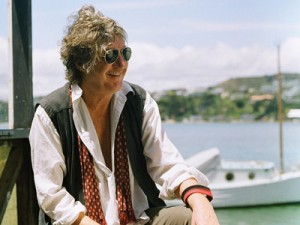
To me Sam Hunt is like that loud, sometimes obnoxious, uncle in the family. Your friends think he is interesting or cool even, but you pretty much cringe everytime he makes an appearance.
Now that isn’t to say I dislike Sam personally. I have never actually met him, never really read or listened to any of his poetry, and to be honest I have very little interest in, or experience of, poetry at all. Sam is the only speaker I heard would be at the event before I attended, and I figured I would grin and bear it.
I found his presentation quite painless. He was entertaining, and seemed to know his stuff. The cringe factor was surprisingly low for me. I cannot say anything about the poetry, it is like a foreign language to me, so I am not qualified to comment.
But I will say that I met a couple of British ex-pats at the after party. One of these were unimpressed by Pip Hall’s presentation, that I was quite excited about. But both of these guys were really impressed with Sam Hunt! Individually they said that neither of them are interested in poetry, and had low expectations prior to him appearing on stage.
So it seems I have my own predjudice or ignorance on this one. -Sorry Sam.
At this point we broke for lunch. It was a welcome respite after a solid morning of mental effort. Four of us from Hamilton, and one of my Auckland friends went for a great lunch at the playhouse pub.
Continue to Part Two – The Afternoon Sessions
Previous posts on TEDx Auckland:

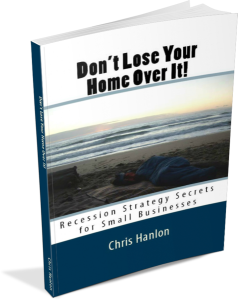





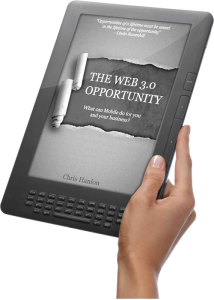
Trackbacks/Pingbacks
[…] This is my experience of the afternoon at TEDx Auckland, my experience of the morning is outlined in the previous post. […]
[…] TEDx Auckland 2012 -part 1 TEDx Auckland 2012 -part 2 […]